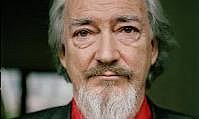BIOGRAPHY

1941-2009
Contemporary Welsh sculptor Barry Flanagan is best known for his animal sculptures, particularly those of triumphant, leaping, anthropomorphic hares. Flanagan established his reputation in the 1960’s at St Martin's School of Art with a group of exploratory sculptures made with materials such as sand, hessian, flax, and rope.Cloth shapes were filled with sand or some other dry material, giving the resulting work a soft, organic form and a lightness of touch, combined with a keen sense of wit and feel for materials, which are the hallmarks of Flanagan's work. Throughout the 1970s he worked with more traditional materials such as stone, marble and steel. In 1979 he began using bronze. He has also worked with prints and pottery. His first solo exhibition was in 1966 at the Rowan Gallery, London. He soon established an international reputation and has exhibited around the world since 1968, including the MoMa in New York (1974). Flanagan's first bronze 'Leaping Hare' was cast in 1979. Much of his work has been installed in public spaces, including 'Baby Elephant' and 'Hare on Bell' installed at Equitable Life Tower West, New York.
In the 1980s he began to focus on the creation of representational sculpture of animals, with his most common motif the hare. Subtly appropriating human gestures, his rabbits take on such spirited activities as dancing, prancing and even boxing. His works are noted for a sense of spontaneity and the playfulness of the hare itself. He has used bronze in a manner that challenges traditional concepts of 'heroic' bronze figures. His bronze hares can be linked to his admiration for the literary work of Alfred Jarry, in particular his notion of 'pataphysics' -a science of imaginary solutions. Jarry, who is associated with Dadaism and Surrealism, is noted for an iconoclastic humor through which he attempts to demolish logic and morality. It may be said that Flanagan approaches his art in somewhat the same manner, as many of his hares are given human qualities and other anthropomorphic traits, however they do not project any specific politics or morality. It's possible that his use of the hare as subject matter implies knowledge of its broad transcultural associations, for example, as a symbol of life in Egypt and China. Flanagan's bronze hares have been exhibited in many outdoor spaces, most notably on Park Avenue in New York in 1995-6 and at Grant Park, Chicago in 1996.
